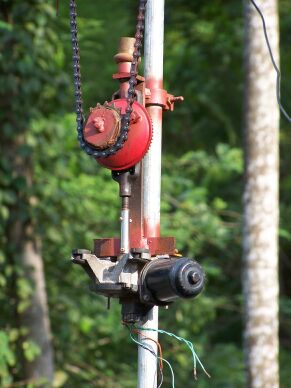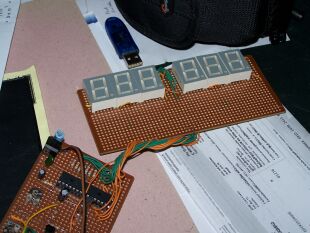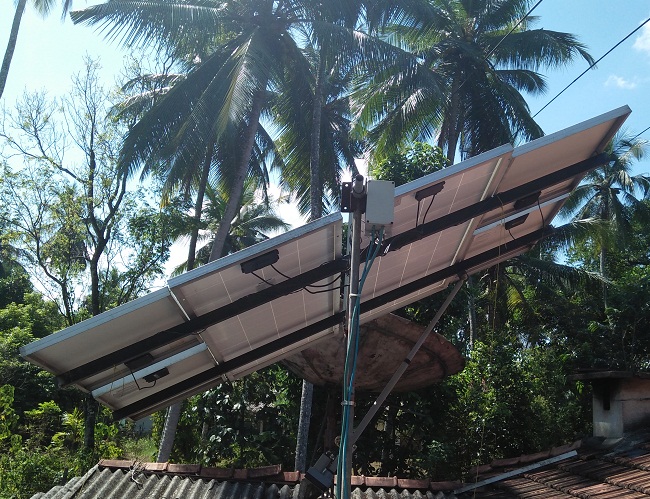4S7AB Solar Power
4S7AB is now connected to the sun, the ultimate power source – RSSL News Article 2006
1000+ already viewed!
Article Summary
My interest towards solar power came when we had long hours of power cuts in 2003 due to shortage of rain in the country. Sri Lanka’s energy is heavily dependant on hydropower but now there is a tendency to move towards thermal power and wind power as a solution in the long run. As radio amateurs, we need to think about alternative energy sources for powering our stations. This is not only as a solution to the ever climbing energy cost but also as a way of preparedness for difficult times.
Article Highlights
- Panel rotation to face the SUN
- Homebrew battery charge controller
- 2019 Solar Power Update

Kamal Edirisinghe
4S7AB / KA5MAL
Author Sep 2006
Having More than 35 years of experience in the Field of Amateur Radio, I have published many articles in prestigious international publications like, QST, CQ-DL, NCJ, Six-News etc.. Here in this web site, these write-ups are intended to give you knowledge about my designs and projects related to the hobby. The articles about foreign HAM activities are intended to share my experience.
- Full Solar Powered Radio Station
- SO2R and Multi-Multi Compatible
- Operate on All Bands/Modes/SATS
- DXCC #61,271
- IOTA AS-003, CQ-22, ITU-41
Today my entire ham station runs using solar power all the time. The charged batteries can survive 3 to 4 days without sunlight. Anyway the activity levels go low in rainy days due to lightening etc.. Further, if I can utilize few more batteries in parallel, then I will be able to increase the survival time too. Another good thing about using solar power is that now I am always concerned about reducing my output power levels and managing the battery power. This also directs me to use more power efficient modes like CW, PSK31. MFSK etc..

This small write-up is about the way I have utilized solar power to power my entire ham radio station.
I was able to buy two 36W panels from a person who was selling some of his old panels in April 2005. Initially these panels were directly connected to a 12V motorcar battery and the controlling of charging was done manually. The panels were giving 18V at 1.8A in short circuit. When they are connected to the battery in parallel, they produced about 1A to the 12V battery. The panels were laid on the roof horizontally.
But it was very clear that when the panels are faced directly to the sun, the efficiency becomes considerably higher. Therefore I have decided to mount the panels in a mechanical arrangement whereby I can turn the panels automatically to the sun. The picture on the left is a result of this.
The rotating mechanism is home designed using a geared wiper motor of a Toyota FB-14. It has two speeds and turns both ways when the polarity is reversed. Then there is another mechanism to slow the movement further down and product much higher torque. This mechanism was designed to mount four (4) panels in the axis.
Close up of the Panel Rotation
Here is another close-up view of the turning mechanism. All parts are homebrew with the help of the local welder who did a nice job according to my specs.
The frame was constructed using a heavy gauge 3/4 inch GI pipes. The upside down ‘T’ sections prevents the assembly from falling over. In windy areas, some more supporting might be required.
There is also another limit switch at the other end of the axis . This was constructed using a modified wiper motor. This prevents the panels from turning around continuously if some malfunctioning of the controller circuitry occurs.
The panel rotation controller
The controller circuitry uses a PIC microcontroller 16F84. It takes care of turning the panels to the sun every 1/2 hour as programmed. Once the sun sets, it turns the panels to the sunrise position and waits for the next day. Again the turning mechanism gets activated at the sunrise and continues until sunset.


2019 Solar Power Scenario New
My Panel capacilty is 300W and it’s charging about 300Ah of batteries in a disributed system. One battery 200Ah is connected to my Ham Station and it’s powering the station most of the time. Two SMPS are always on standby for powering up on dark days or contest operation etc.. Battery Power gives a clean and noise-less RX performance where every bit is vital on low bands.
in 2018, I have installed a fully rotateable mechanical structure for the panels. The panels can be oriented to the sun for optimal power. Below are some of the pictures of the rotateable panel structure. Satellite actuator is doing the near 180 degree rotation. This can also be automated if the need arises.
I have a seperate Solar system connected to the Grid that powers the entire home and my Electric Car Nissan Leaf. My attraction to clean energy solar power continues…


